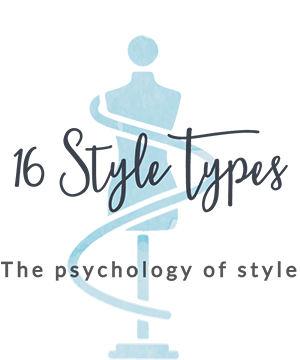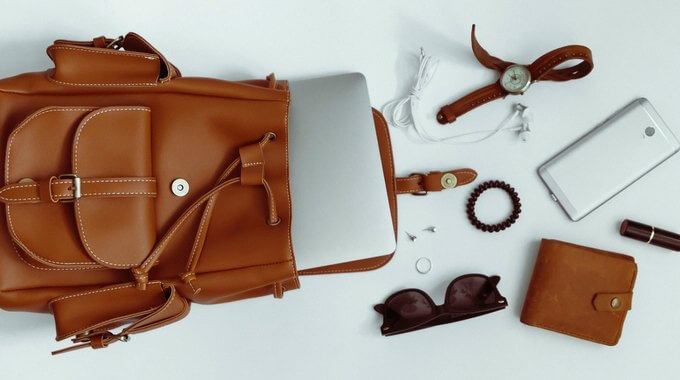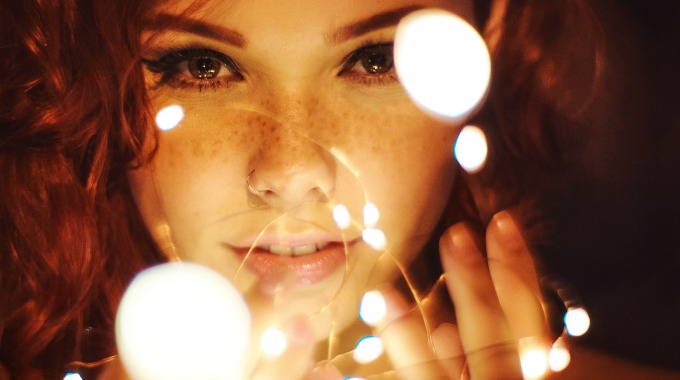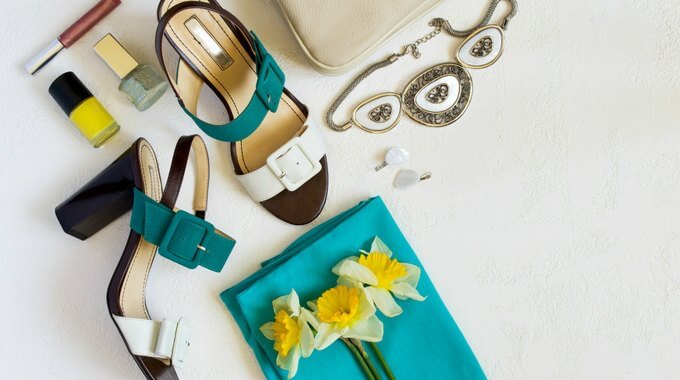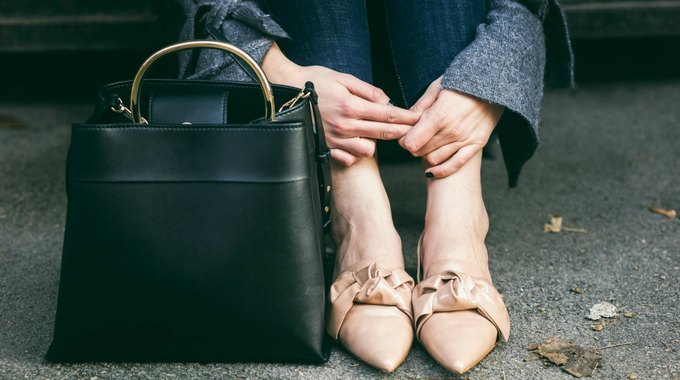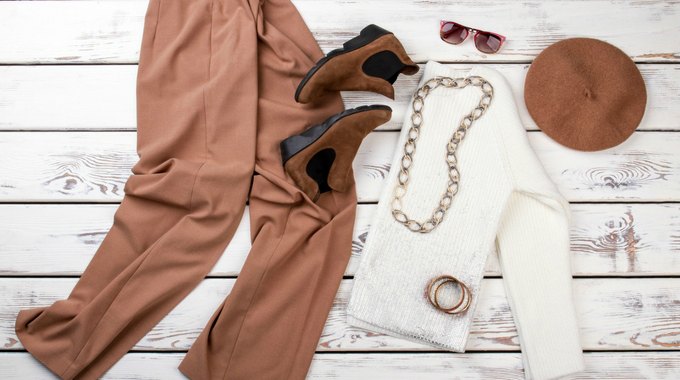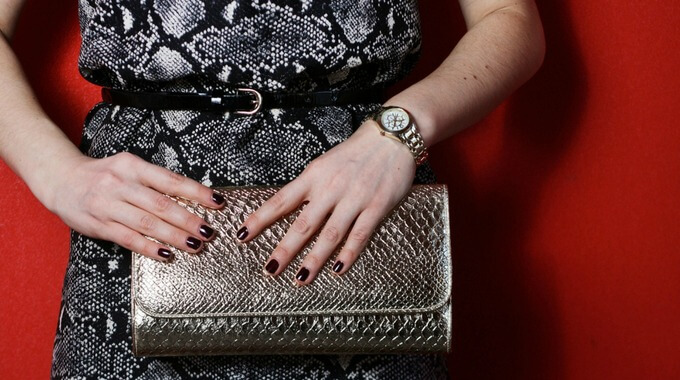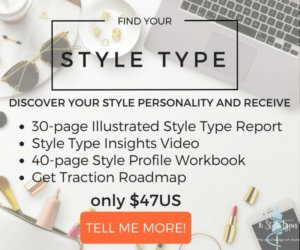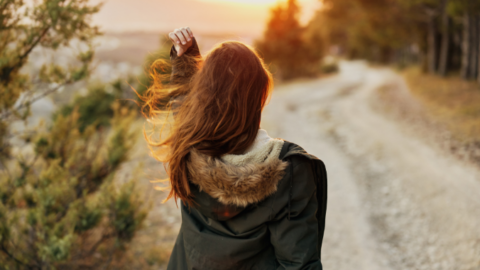By Jill Chivers
Not all stress is created equal. Studies and experts tell us that some stress is definitely bad for us, and other stress is good for us, or at least not quite so bad. However we look at it, stress is part of our lives, and has always been a part of the human condition.
Style stress is something we’ve become interested in here at 16 Style Types. How do women of the 16 Style Types become style stressed? What triggers or causes style stress in one Style Type, but not another? What does style stress feel like, or how is it experienced, by women of different Style Types? And most critically, how can women of varying Style Types reduce the style stress they encounter and manage the style stress they experience?
This is the focus of this four-part series on style stress, with this article focuses on The Style Pragmatist – women who have ST (for Sensing and Thinking) in their four letter Style Type code.
Is Style Stress Real?
Style stress is a very real phenomena. Many women we met convey to us the varieties of style stress they experience, and have sometimes experienced for years – decades. Part of their style stress comes from a very clear understanding that the way we look, and how we dress, matters.
How we look and dress matters to ourselves, first and foremost — it can mean the difference between feeling like yourself, or feeling like you’re playing dress up or wearing another woman’s clothing.
How we look and dress also matters to others — others make judgements about us, often in an instant, based on their perceptions of what they see when they look at us.
And in this world of fast fashion and even faster information (often of dubious providence and quality), even social media is causing us style stress.
Our Style Type plays a significant part in the style stress we experience, and what we do in response to it when it happens to us.
We meet a lot of women whose style stress is about congruency and authenticity: they desperately want to feel like themselves, and to get in touch with the most essential part of what makes them who they are – they’re tired of feeling like an imposter on some crucial level. And they want to express that in a style that is real and true for them.
Sensing and Thinking Style: Pragmatic Polish
The Style Pragmatist – Sensing-Thinking (ST) approach to style sits on a strong foundation of a traditional style expression. There is a need for clear rules that make logical sense, combined with a drive to limit options within boundaries that are composed of those clear, logical rules as well as self-determined requirements. Balancing the many factors required to present a style entirely suited to the conditions, STs like to be prepared and equipped for the situation.
Click here to learn more about the ST approach to style
We’ll now explore each of the ST Style Types in turn: Resourceful Stylist ESTP, Individualistic Stylist ISTP, Effective Stylist ESTJ, Appropriate Stylist ISTJ.
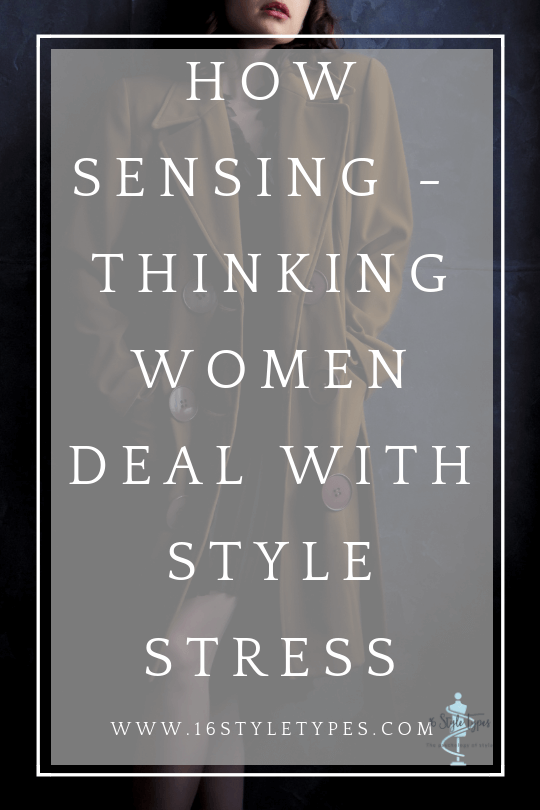
ESTP Stress and Style
Thriving in situations which call for engagement with their surroundings, the Resourceful Stylist ESTP can experience disruption to their usual positive, energetic way of being when too much structure or some kind of physical impediment gets in the way. Stress may show up in any number of ways, including:
- There isn’t enough pragmatic hand-holds for her to really let her get a grip when it comes to her style. She may grasp the style concepts (she’s intelligent, after all) but the concepts are too high level, too conceptual or theoretical and lack sufficient pragmatic links to her situation and needs. Celebrity fashion advice such as “create a look that is laid back yet fashion forward” may baffle as much as frustrate
- There’s a physical issue or obstacle that needs to be factored in. It may be an emerging physical condition, or an injury or illness that disconnects her from her usual sense of joy and connection to herself and her environment
- There’s an overarching structure which is too limiting for the ESTP who craves flexibility in her style (and all else). This includes too many style rules or workplace requirements, too many limiting capsule wardrobe plans, too many lists of wardrobe Must Haves that don’t gel or apply
Often using amplified activity to cope with stress, the ESTP may become withdrawn, hypersensitive, and despondent.
Breaking the cycle of ESTP style stress
Pathways that help ESTPs regain control allow for productive use of iNtuition, including the following suggestions:
- Playing around with worst case style scenarios to see what’s real and what’s not. So you’re stuck in an uncomfortable “uniform” or your outfit is too casual or too creative for the occasion? What’s the worst that can happen should those things occur? Contingency planning for worst-case style scenarios can result in feet being placed firmly back on the ground
- Planning something enjoyable such as a new-to-you outfit for doing her favorite outdoor activity or for going out to dinner with her partner. Head to the mall and have fun trying on 10 different items she normally wouldn’t wear – just for fun
- Brainstorming a bunch of new style ensembles or ways to upcycle existing pieces that she loves – get her imagination going in positive ways that serve her style. Accept style limits in one area of life by playing with style to the max in another
ISTP Stress and Style
Thriving when they can solve practical problems based on sound principles, the Individualistic Stylist ISTP is naturally curious about particular topics of interest. If style is one of those topics, she may find herself suffering style stress when faced with too much information and not enough reflection time. The innumerable ways style stress can show up include:
- Being provided with too many style activities and information with not enough reflective time to make sense of it all. She may be going through a major transition in her life and learning all about how to adapt her style as a result by reading a variety of information from many style sources. If there’s not enough application time to sort it out into a personalized style template, she can feel overwhelmed, lose vital connection to what she’s learning, and end up actioning very little
- When the style information she’s receiving makes no practical sense to her, isn’t logical in some significant way, or is presented in an overly expressive, emphatic or emotional way
- Situations which have insufficient capacity (time, space, structure) to apply her unique brand of analysis to the style information. An example is feeling pressured when shopping with others who aren’t applying underlying style principles to their shopping approach
If stressed, ISTPs can bury themselves in logical analysis and can become overly caught up with minor inconsistencies, critical of everything she is learning, reading, and experiencing.
Breaking the cycle of ISTP style stress
Pathways that help ISTPs get back to equilibrium include effective engagement with Feeling, including the following suggestions:
- Bringing the focus to interactions, relationships, and values. What are the personally meaningful aspects of style to reconnect with? Finding an interested yet objective conversationalist (such as hiring a respected image adviser) can help
- Joining with others for social style time – going shopping with friends (especially if it’s just to browse), rotating through the wardrobes of a specially chosen group of friends or family members to reconnect with what she already own that she loves, or sharing her style file with style buddies can all be great ways to reconnect – with self, with style, with others
- Clarifying what is meaningful about style – listing out the important values that having a great style allows her to do, or spending time online looking at pictures of outfits and individual items purely for the purpose of identifying what she likes (not to purchase or to analyze)
ESTJ Stress and Style
Logical, quick, efficient and task-oriented, the Effective Stylist ESTJ can experience style stress quickly if her trusted success strategies and tactics are under attack. Under stress, the ESTJ can become rigid and overly controlling, falling into self-pity and a spiralling sense of being out of control. Any number of things can cause the ESTJ style stress including:
- Becoming unsure of herself and her style, especially if she thought she had her style working nicely for her. Trigged by anything from a change in her circumstances (retiring from full-time work, or her coloring softening due to the normal ageing process) can cause her usual sense of style competence to become shaky. Whatever the roadblock to style success is, she feels a lack of control which is deeply unsettling
- Discovering that trusted style principles and models have become outdated or that she’s lacking vital data. Perhaps it’s discovering the four season approach to color is outmoded and superseded by more precise models of personal color analysis, or realizing her new location requires a style of dressing she doesn’t yet know how to pull off, she can struggle when what she’s faced with goes against processes that have always worked but now aren’t
- When her style decisions aren’t suitable for her circumstances and she has unintentionally stepped on someone’s toes. This is especially upsetting if she can’t see the logic or thought her choices were straightforward and sensible
An overwhelmed ESTJ can become doggedly determined to carry on as she was, closing herself off to helpful data and ideas. Extreme task orientation and becoming cold and remote to others can result.
Breaking the cycle of ESTJ style stress
Pathways that help ESTJs return to equilibrium and a sense of control include effective use of Feeling, including the following suggestions:
- Taking a big step back from known style strategies and discussing her style dilemmas with a trusted, credible friend or style adviser, someone who can help her identify different courses of action and how they will impact on herself – and others
- Taking conscious steps to reconnect with style values and what is really important to her when it comes to her authentic style journey. Re-connecting her style pillars from her Style Type Report (page 7) can also provide a vital link back to her underlying style values
- Connecting to inner motivations and feelings, which may include journaling about her style journey and reading uplifting style articles that connect her to what lies beneath the surface
ISTJ Stress and Style
Acutely aware of time-tested solutions to most things, the Appropriate Stylist ISTJ can become style stressed when the rules aren’t clear and there is too much unstructured openness for them to make mistakes within. Style stress can show up in any number of different ways:
- When style routines and schedules are disrupted or when she can’t use the style processes or methods she knows will work
- When she’s asked to create something entirely new and little specific guidance is given or available—especially if the changes defy common sense or no one explains why the new will be better than the status quo (as can happen when the style advice is to try a completely different look than she’d normally go for, for example)
- When there aren’t enough style rules to give them confidence in their choices. ISTJs can feel out of their control if there isn’t enough practical realism or there’s too many nonspecific suggestions
Putting her nose to the grindstone, becoming overwhelmed with detail and worry, doing more and more of what isn’t working can be a sign the ISTJ is in style stress.
Breaking the cycle of ISTJ style stress
Pathways that help ISTJs find their feet again include conscious use of iNtuition, including the following suggestions:
- Concentrating on the big picture. In five years from now, will that style slipup really matter? What is her overall style goal? Devising a style recipe or style statement is another way to tap into the big picture without getting lost in the detail
- Joining with others in a creative style endeavor. Hire a personal shopper for the day, join a jewellery making or sewing class with friends, ask a friend to join her having her colors analyzed by a professional image consultant, or spend an afternoon making up entirely new ensembles from existing pieces are all great ways to tap into style potential and possibilities
- Planning out how she’d handle the worst that could happen. Imagine the worst style outcome then devise three positives which could come from it, or allowing her mind to wander and come up with new ways to think about the situation

